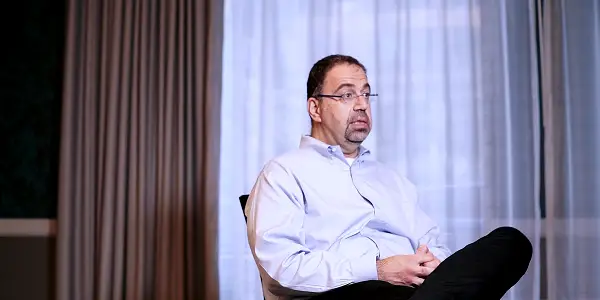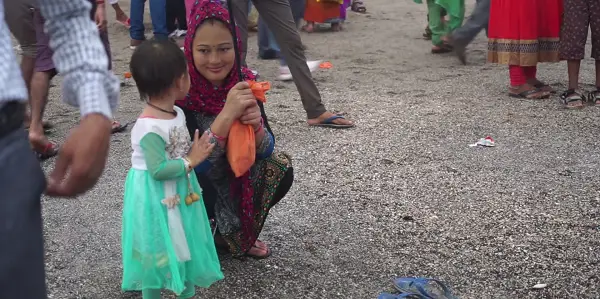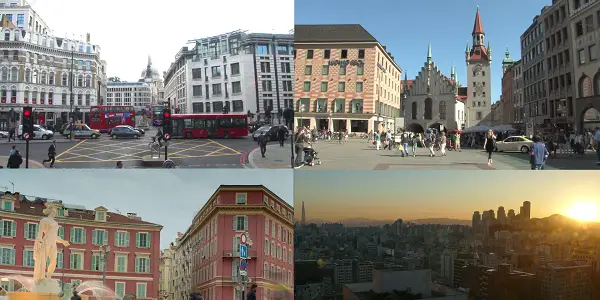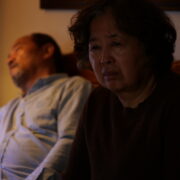STILL HUMAN: Focus On The Disenfranchised

A former video store clerk, Mark has been writing about…
We live in a world with wealth disparity. How can we have so much money and food in the world, yet many are homeless, starving, and refused care? David Albert Habif’s Still Human is a documentary tackling this most relevant social problem. However, unlike other films on the topic, he doesn’t reduce this issue to a mere exposé or a simplified response to this massive dilemma.
This is not a film that tries to rationalize the status quo of capitalism to fix problems that have always been features and not bugs. It’s also not a film that aggressively pushes for more socialism, using scary words that shrivel the centrists. Strangely, there’s a middle ground reached that treads closer toward meaningful reform with an almost clinical approach. While this may dry the film, it almost paints a more complete picture than most movies on this subject.
A Tale Of Two Cities
One of the ways that the film simplifies its grandiose subject is by offering up a comparison. Los Angeles and Mumbai cities are compared for their similar problems of income and social disparity. There’s a noticeable difference between them: Mumbai’s population has exploded, and Los Angeles faces a more straightforward wealth gap with prevalent homelessness.

That’s the point the film stresses best. There is no simple solution to all of this. The film’s animated graphics clearly show how throwing more money at this issue won’t solve it. Even the entire wealth of multiple countries combined would not be enough to fix the social problems in Mumbai. While a country’s total wealth might bode well for solving homelessness in America, it’s a different story in India.
The Analytics Of The Unequal
A film like this does not waste time by showcasing too much B-roll of impoverished conditions. We’ve had those types of documentaries that probe into this area and slap on heartfelt music to tug at the heartstrings. This movie is not for people just realizing that people worldwide are suffering. This is the film for the person who has seen all those gutwrenching displays of poverty and wants to find more of a solution.

There’s an organized method to this film that covers a substantial amount of ground without meandering too much. The facts are about how homeless populations skyrocket and how orphans get lost in the system. In addition to showcasing how we got here, the picture outlines how we might find our way out of inequality.
While the changes specified seem more incremental than immediate, it is refreshing that this type of picture never shrugs about what to do or fallback on stating “change is needed” with no ideas.
Expert Analysis
To find out how we got here and the issues we face, David Albert Habif has tapped a host of insightful talking heads on the topic. Daron Acemoğlu is an MIT economist with keen observations on how political governments shape economic states of uniqueness. Mark Ragins is a psychiatrist of the Recovery Movement who aims to explain how mental health becomes a more significant issue compounded by class issues. Rita Soronen of the Dave Thomas Foundation for Adoption outlines the problems facing the child welfare system regarding orphans and abused children. Each voice feels like a laser focus on relevant aspects of wealth disparity, not just echoes.

Breaking up the interviews are some animations outlining the disparities in easy-to-read diagrams. The quality of these animations is all over the map. Some of them are highly-detailed computer graphics to showcase the size of nations and the impact of money. Some of them are light doses of 2D animation familiar with explainer videos. Some of them are very basic animations in a Powerpoint presentation. Despite the inconsistency, it’s refreshing that the more complex facts are given simpler designs, where the viewer won’t become lost in the visuals. The last thing a filmmaker would want is for audiences to become hung up on designs that take away from the vital message.
A Calm Approach
The more I learn about the wealth disparities in the world, the easier it is to get aggravated at the whole complex topic. An increasing rage boils about demanding radical reform and shaking the centrists by the shoulders to wake up and take this matter seriously. So my initial reaction to David’s level-headed response was one of irritation.
As the film progressed, however, the focus started to narrow closer to the culprits. There’s no individualizing of the issues, where David places blame on ourselves as though our recycling containers will solve waste issues of the world perpetuated by big business. While the film doesn’t name names, it does provide enough of a clear outline of what led to this mess. It’s akin to leaving a trail of breadcrumbs where one hopes the viewer will follow up to solve the mystery of the disenfranchised masses.

While I’d hate to boil the film down to a catch-more-flies-with-honey rationalization, there is something to be said of this objective approach. Too often, reactionaries have used the “facts don’t care about your feelings” line to disconnect any emotional concern for the world’s welfare. There will be some who won’t even regard the facts presented here and want to believe that capitalist structures are just fine. This film is not for those people. This film is for those who felt something amid all the heartbreaking footage of poverty and are on the fence about how to deal with it. If it doesn’t radicalize them to do more, it will, at the very least, make them more knowledgeable of the situation beyond just a shrug of, “Hey, that’s life.”
Conclusion: Still Human
Still Human is one of the most nuanced and eye-opening documentaries on poverty. With a tactile nature free of grand theatrics, the stern focus becomes unique enough to be as interesting as educationally sound and emotionally driving. A movie like this doesn’t require truckloads of B-roll from impoverished nations and tent towns to sell the idea that this is a problem. We already know it’s a problem, and this film has the guts to treat its audience like adults who want something more than awareness.
Still Human is currently available to purchase on video on demand.
Watch Still Human
Does content like this matter to you?
Become a Member and support film journalism. Unlock access to all of Film Inquiry`s great articles. Join a community of like-minded readers who are passionate about cinema - get access to our private members Network, give back to independent filmmakers, and more.
A former video store clerk, Mark has been writing about film for years and hasn't stopped yet. He studied film and animation in college, where he once set a summer goal to watch every film in the Criterion Collection. Mark has written for numerous online publications and self-published books "Pixels to Premieres: A History of Video Game Movies" and "The Best, Worst, Weird Movies of the 1990s."













